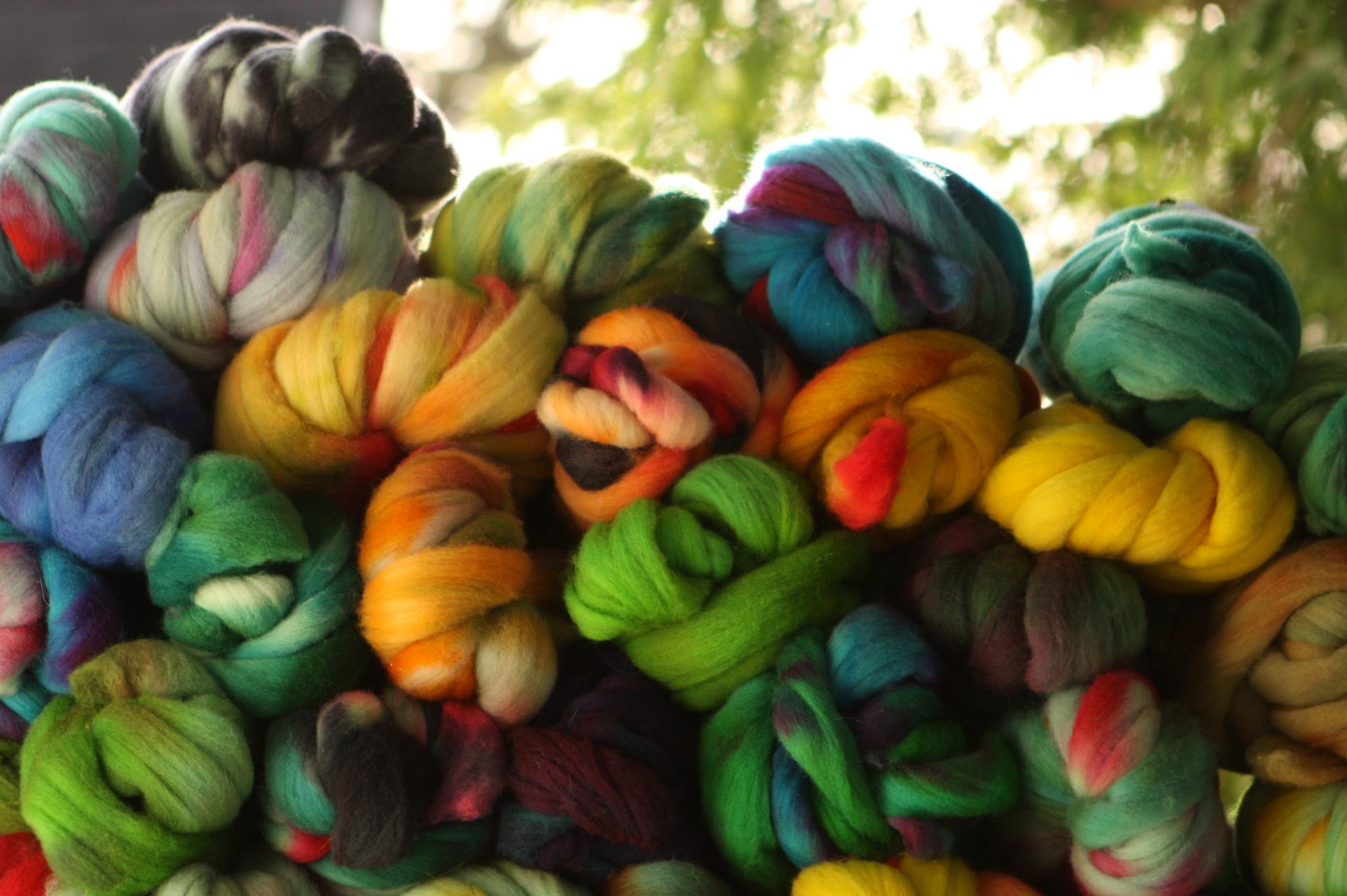
Dyed Wool Top via Ashley Martineau of Neauveau Fiber Arts
Roving, rolags, batts. Wait, what language are we speaking? Ah yes, the language of spinning fibers.
Those terms can definitely get your mind in a whirl, especially if you're a beginner. If you're an experienced spinner, chances are you already have a favorite kind of wool preparation to spin — but have you tried them all?
We're about to walk through all the spinning fibers one by one and talk about what styles of yarn you can make from each. Get ready to expand your spinning universe!
7 Types of Spinning Fiber
1. Top
Top is fiber that's been run through a wool comb, which looks like a giant hair comb. True top is processed by hand, and all its fibers go in the same direction with very little air between them. Traditional spinners use top to spin worsted yarns (not worsted weight, but worsted style).
2. Commercial Top
This is a machine-made version of top. But in case you need any more proof that humans are superior to machines (at least for now), this processed variety isn't as perfect as the top that's done by hand. Nearly all the fibers in commercial top go in the same direction (note that we said nearly) and most of the air between the fibers has been eliminated. Most.
3. Roving
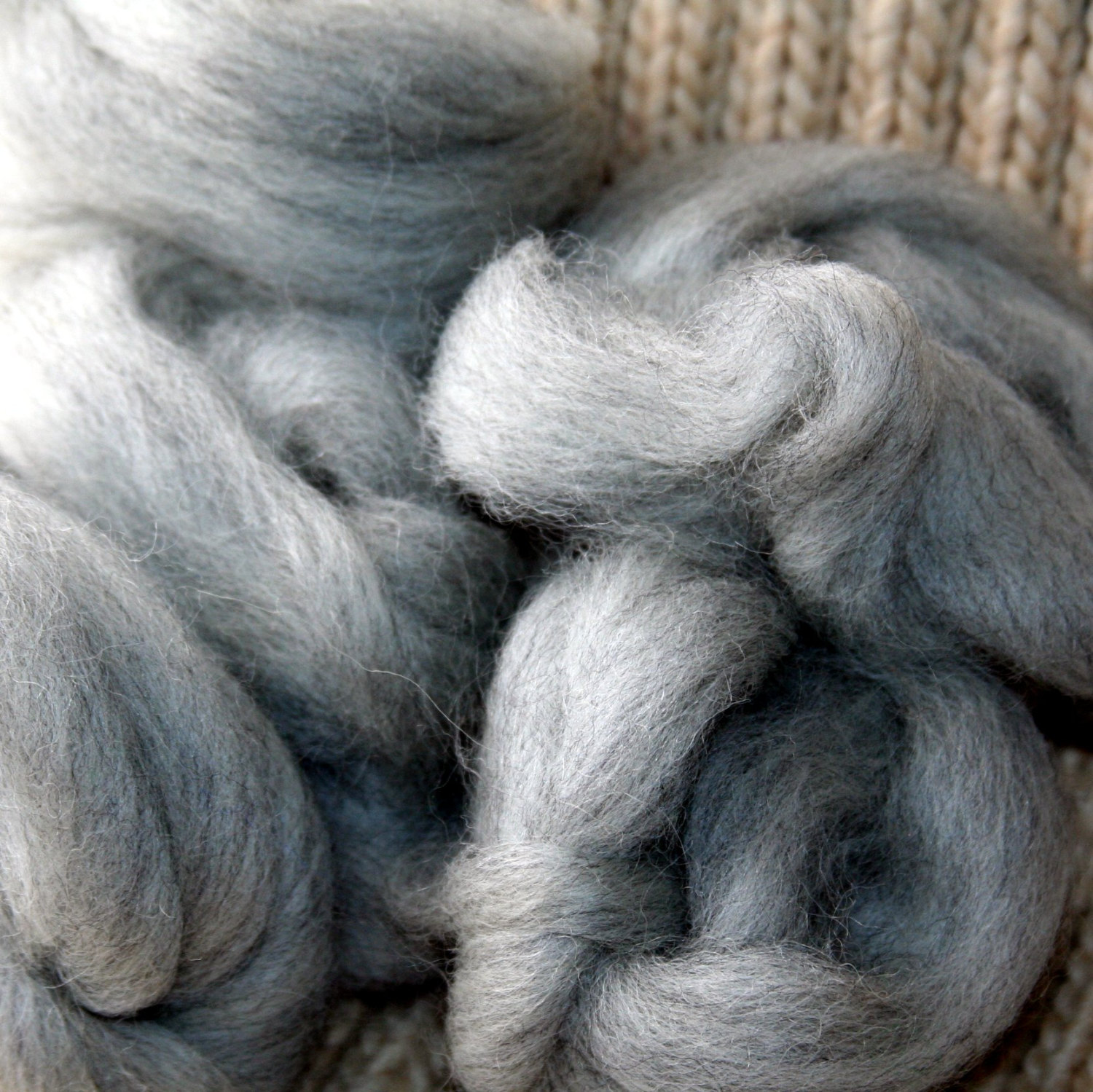
Natural colored roving via Soup to Knits
Roving is wool that's been run through a mill on a carding machine. A carding machine has teeth that brush the fiber (like a giant hairbrush) so it goes in the same direction, for the most part. But since roving fibers don't all go in the same direction, you'll get a fuzzier texture than you will with top.
When you spin roving into yarn, it's called woolen style yarn or simply "woolen," even if it's not made out of wool. (Yup, confusing!) It makes a light, lofty yarn, in part because of the air between the fibers.
Roving is also a great fiber for needle felting, since the fibers aren't all in alignment and can grab onto each other easily during the felting process.
4. Rolags
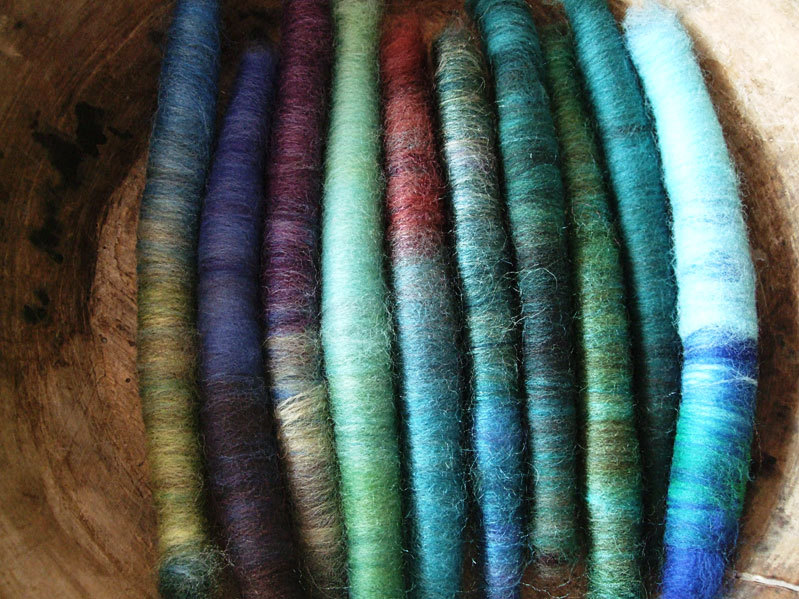
Hand blended rolags via Vicke Vera
This is fiber that's been processed using hand cards or a blending board. The fibers are combed through on the cards or dragged across the board to spread them out; then they're rolled by hand into long rolls. Rolags are like thinner, longer versions of art batts (see below) and are excellent for spinning medium-weight, textured yarns — thick or thin.
5. Batts
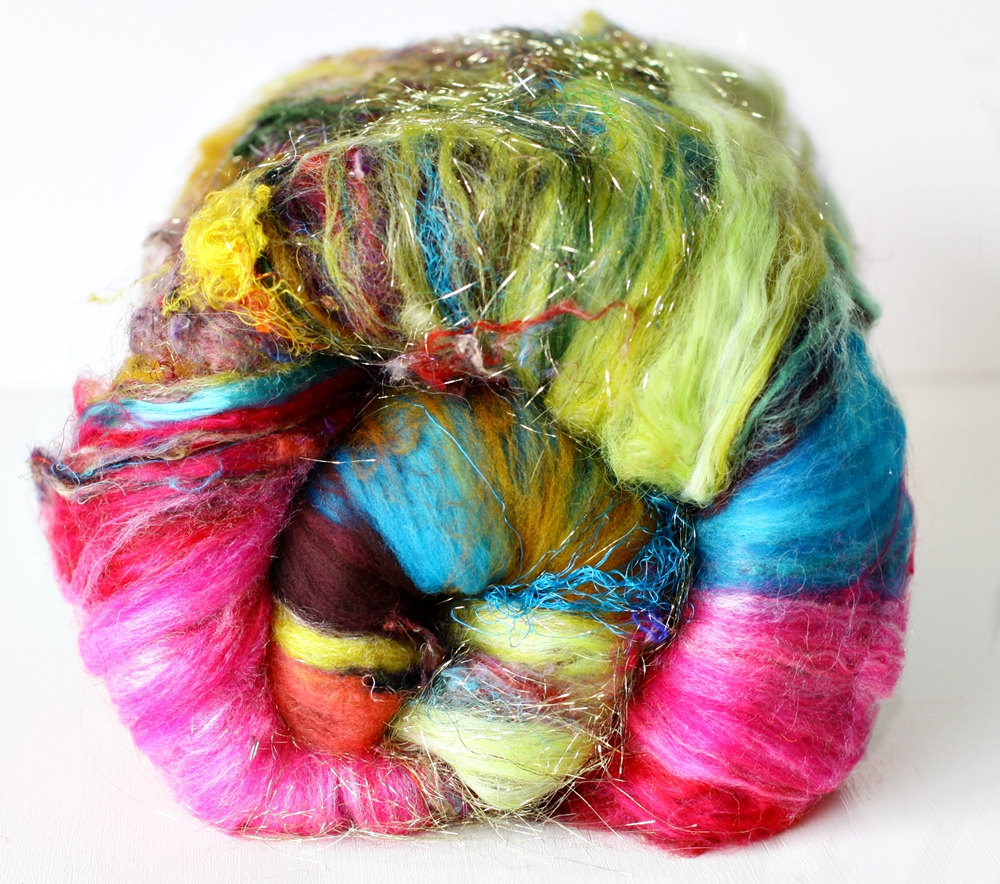
Hand carded art batt via Atomic Blue
Batts are fibers that have been processed on a drum carder, which is like a giant round hairbrush with a handle. You put fibers through the handle so they'll get brushed and blended.
Many fiber artists like to create art batts full of texture, color and usually some sparkle. The fibers are fun to spin, and they create bulky thick and thin yarns with lots of gorgeous variety and random-looking chunks.
6. Wool Locks
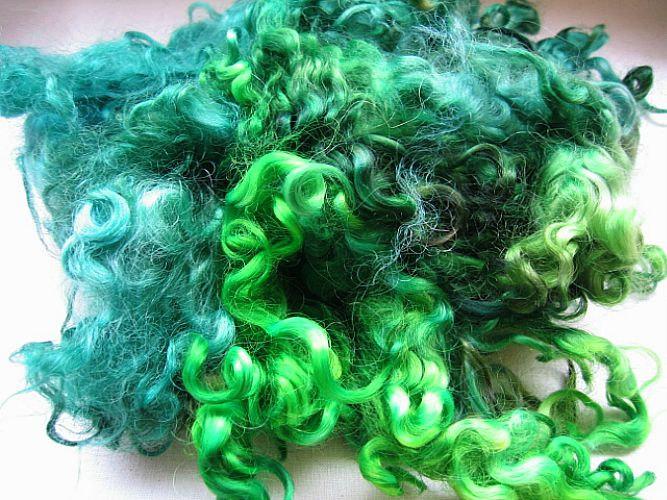
Dyed wool locks via Enchanted Yarn
These are fibers that have been washed and sometimes dyed, and they can be separated into individual locks from the sheep. You can spin directly from wool locks, or you can put them through a drum carder to make an art batt for added texture. You can also process them using hand combs and turn them into true top. Wool locks are basically an unprocessed form of fiber that can be made into any of the forms we talk about above.
7. Raw Wool
This type of fiber has been sheared off the sheep and hasn't been processed at all. Some spinners enjoy spinning "in the grease," directly from the raw fleece. You'll need a very clean, heavily skirted fleece to spin in the grease. Or you can wash the fleece and process it into any of the forms above.
By the way, sometimes you'll hear the terms "combed" and "carded." Those words just refer to fiber that's been processed on wool combs or carders. Carders are like hairbrushes, and wool combs are like, well, combs.
If you're interested in spinning, it's a good idea to try out all these preparations. That's the best way to get a feel for the uniqueness of each type, and for the yarn, it can create.
A Note for Beginners
If you've never spun before, start with pencil roving. It may look like yarn at first glance, but it hasn't been spun enough to become a secure yarn (plus it pulls apart easily). Pencil roving has been pre-drafted for you. What does that mean? Drafting is pulling the fibers apart to create a thin, even yarn.
Most preparations of fiber require you to draft while you're spinning. But pencil roving eliminates that step, so you can get used to just feeling the fiber spin between your fingers — and letting the spun yarn wrap around your drop spindle or bobbin.
Once you're comfortable spinning pencil roving, then you can practice drafting other preparations of fiber and spinning them into yarns. Then you'll be on your way to putting your own spin on all kinds of projects!

I've been spinning for a while and never knew this. Thanks so much, it's so very helpful.
Thank you for writing such a clear, understandable article.